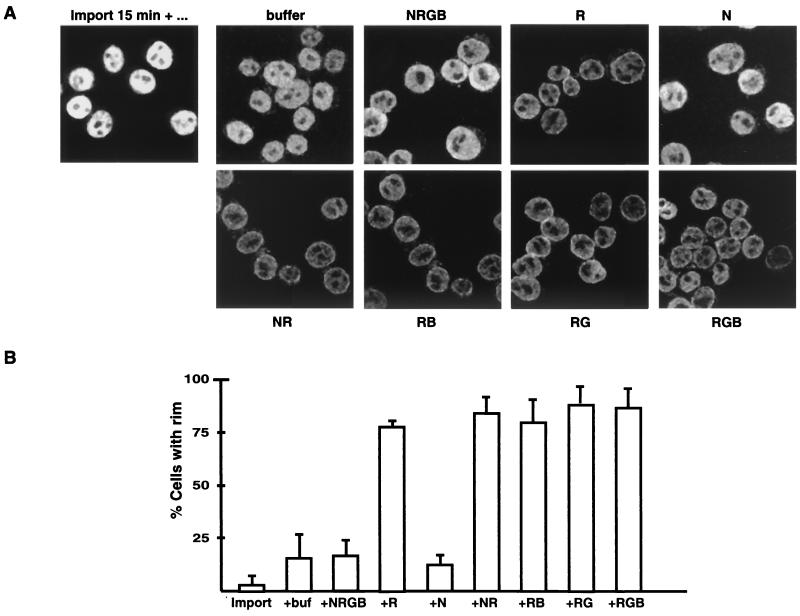FIG. 9.
Xpo-t accumulates at the nuclear rim when either Ran hydrolysis or import is perturbed. (A) Two-step permeabilized-cell assay in which fluorescently labeled Xpo-t is first imported into the nuclei for 15 min at room temperature (import 15 min +…) while the cells settled into the bottom of the reaction tube. As much as 80% of the supernatant containing unincorporated Xpo-t was then removed, and the cells were resuspended in fresh buffer and aliquoted into a second reaction mixture containing either buffer or the indicated components of the Ran system. The designations of the individual components are as in Fig. 4. When any individual component of the Ran system was left out of the reaction, the net result was that the Xpo-t nuclear signal was reduced and a nuclear rim signal was more visible, suggesting that both Ran hydrolysis and import are critical for efficient recycling of Xpo-t between the nucleus and cytoplasm. (B) Quantitation of the percentages of cells in each of the above conditions that were seen to have a rim signal. For each condition a total of ∼50 to 75 cells were counted from three independent experiments.

